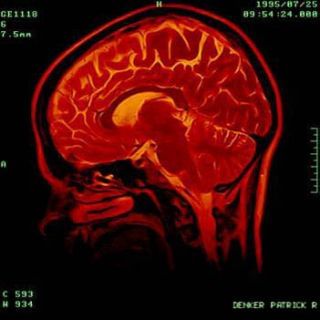Get the App
For Doctors
Login/Sign-up
Last Updated: Aug 29, 2019
BookMark
Report
How the Brain Can Hear Voices That Don't Exist
Dr. K V AnandPsychologist • 22 Years Exp.BASM, MD, MS (Counseling & Psychotherapy), MSc - Psychology, Certificate in Clinical psychology of children and Young People, Certificate in Psychological First Aid, Certificate in Positive Psychology, Positive Psychiatry and Mental Health
Schizophrenic individuals who experience auditory hallucinations seem to hear voices (link is external) emanating from within their own skulls. These voices are often vulgar or derogatory; they may constantly criticize one’s actions or command the listener to commit destructive acts, such as self-harm or violence. Sometimes, hallucinations consist of not voices but sounds—whispers, growls, or screeching.
So what is going wrong in a brain that hears noises that others don’t?
Interestingly enough, the same brain areas that activate when people hear real noise also light up in schizophrenics during hallucinatory episodes. Using functional magnetic resonance imaging (fMRI) scans, several studies have found increased activation in Broca’s area (link is external) (a language processing region) and in the primary auditory cortex (link is external) in schizophrenics as they “hear” voices that aren’t real.
But more answers lead to more questions. In this case, why are there abnormal activation of auditory- and speech-related brain regions in the absence of sound?
It may have something to do with brain structure: That tiny part of the brain that is so critical to processing auditory information in humans, the primary auditory cortex, is often smaller in schizophrenic individuals. Across multiple fMRI studies (link is external), researchers have found that reduced volume of the anterior superior temporal gyrus (which contains part of the auditory cortex) in schizophrenics is correlated with increased severity of hallucinatory episodes.
Another structural deficit found in schizophrenics is a weak connection between certain brain regions, specifically between the frontal and temporal lobes. This means that “certain groups of neurons, such as those responsible for producing and receiving language, may begin to function autonomously, beyond the control or influence of other brain systems,” writes Ralph Hoffman (link is external), a professor of psychiatry at Yale University. “It is as if the string section of the orchestra suddenly decided to play its own music, disregarding everyone else.”
Branislava Curic-Blake and colleagues (link is external) (2013) investigated this idea by scanning schizophrenic patients as they performed a task requiring inner speech processing: Subjects were shown two-syllable words on a screen and had to indicate whether the stress was located on the first or second syllable by pressing a button. In order to complete the task, subjects sounded out the words in their heads—effectively activating both inner speech production and language perception regions, according to a previous fMRI study. (link is external) The researchers found that subjects with a history of hallucinations demonstrated reduced connectivity from Wernicke’s area (language processing) to Broca’s area (speech production) relative to the control group.
This disconnect may explain the brain’s confusion of internally generated thoughts with external voices. Hoffman proposes that hyperactivity in the left frontal lobe combined with a weakened connection may lead to Broca’s area “dumping” language into Wernicke’s area—a part of the brain that normally receives speech information from the outside. A passing thought may be experienced as a whisper in one’s ear.
To test this theory, Hoffman and colleagues (link is external) have experimented with transcranial magnetic stimulation (TMS), a noninvasive method that can inhibit small regions of the brain by producing light electric currents—in this case, reducing the hyperactivity of Broca’s area and portions of the temporal lobe. Although results are preliminary, most patients treated with TMS seem to experience relief from their auditory hallucinations, with improvements lasting anywhere from two months to a year. If validated in larger-scale studies, TMS could become an alternative treatment option.
Schizophrenia is a highly stigmatized illness (link is external). Most of us don’t understand hallucinations or delusions—and we are scared of what we don’t understand. We associate “hearing voices” with insanity. But the sounds that schizophrenic people hear are just as real to them as the sound of your child chattering about her day or the car beeping outside. And for them, the noise doesn’t stop.
Once we recognize the neural basis of schizophrenia, we become more compassionate. We begin to grasp the helplessness and confusion that schizophrenic individuals face as they deal with symptoms they have no control over—voices, paranoia, disorganized speech, apathy. And we can take more steps toward supporting those afflicted with this debilitating disease. Burke, who is vice president of the nonprofit group Stigma Fighters (link is external), says the stigma surrounding schizophrenia is particularly demoralizing. “As soon as something terrible happens in the news, that’s the first thing people point to, saying ‘They probably had voices that told them to do it,’” she explains.
“But the truth is, the majority of us are not violent people at all. Giving people with mental illness a voice is the most important thing. Getting us to speak up will create change.”
https://www.psychologytoday.com/blog/the-guest-room/201507/how-the-brain-can-hear-voices-dont-exist
So what is going wrong in a brain that hears noises that others don’t?
Interestingly enough, the same brain areas that activate when people hear real noise also light up in schizophrenics during hallucinatory episodes. Using functional magnetic resonance imaging (fMRI) scans, several studies have found increased activation in Broca’s area (link is external) (a language processing region) and in the primary auditory cortex (link is external) in schizophrenics as they “hear” voices that aren’t real.
But more answers lead to more questions. In this case, why are there abnormal activation of auditory- and speech-related brain regions in the absence of sound?
It may have something to do with brain structure: That tiny part of the brain that is so critical to processing auditory information in humans, the primary auditory cortex, is often smaller in schizophrenic individuals. Across multiple fMRI studies (link is external), researchers have found that reduced volume of the anterior superior temporal gyrus (which contains part of the auditory cortex) in schizophrenics is correlated with increased severity of hallucinatory episodes.
Another structural deficit found in schizophrenics is a weak connection between certain brain regions, specifically between the frontal and temporal lobes. This means that “certain groups of neurons, such as those responsible for producing and receiving language, may begin to function autonomously, beyond the control or influence of other brain systems,” writes Ralph Hoffman (link is external), a professor of psychiatry at Yale University. “It is as if the string section of the orchestra suddenly decided to play its own music, disregarding everyone else.”
Branislava Curic-Blake and colleagues (link is external) (2013) investigated this idea by scanning schizophrenic patients as they performed a task requiring inner speech processing: Subjects were shown two-syllable words on a screen and had to indicate whether the stress was located on the first or second syllable by pressing a button. In order to complete the task, subjects sounded out the words in their heads—effectively activating both inner speech production and language perception regions, according to a previous fMRI study. (link is external) The researchers found that subjects with a history of hallucinations demonstrated reduced connectivity from Wernicke’s area (language processing) to Broca’s area (speech production) relative to the control group.
This disconnect may explain the brain’s confusion of internally generated thoughts with external voices. Hoffman proposes that hyperactivity in the left frontal lobe combined with a weakened connection may lead to Broca’s area “dumping” language into Wernicke’s area—a part of the brain that normally receives speech information from the outside. A passing thought may be experienced as a whisper in one’s ear.
To test this theory, Hoffman and colleagues (link is external) have experimented with transcranial magnetic stimulation (TMS), a noninvasive method that can inhibit small regions of the brain by producing light electric currents—in this case, reducing the hyperactivity of Broca’s area and portions of the temporal lobe. Although results are preliminary, most patients treated with TMS seem to experience relief from their auditory hallucinations, with improvements lasting anywhere from two months to a year. If validated in larger-scale studies, TMS could become an alternative treatment option.
Schizophrenia is a highly stigmatized illness (link is external). Most of us don’t understand hallucinations or delusions—and we are scared of what we don’t understand. We associate “hearing voices” with insanity. But the sounds that schizophrenic people hear are just as real to them as the sound of your child chattering about her day or the car beeping outside. And for them, the noise doesn’t stop.
Once we recognize the neural basis of schizophrenia, we become more compassionate. We begin to grasp the helplessness and confusion that schizophrenic individuals face as they deal with symptoms they have no control over—voices, paranoia, disorganized speech, apathy. And we can take more steps toward supporting those afflicted with this debilitating disease. Burke, who is vice president of the nonprofit group Stigma Fighters (link is external), says the stigma surrounding schizophrenia is particularly demoralizing. “As soon as something terrible happens in the news, that’s the first thing people point to, saying ‘They probably had voices that told them to do it,’” she explains.
“But the truth is, the majority of us are not violent people at all. Giving people with mental illness a voice is the most important thing. Getting us to speak up will create change.”
https://www.psychologytoday.com/blog/the-guest-room/201507/how-the-brain-can-hear-voices-dont-exist



+1.svg)
